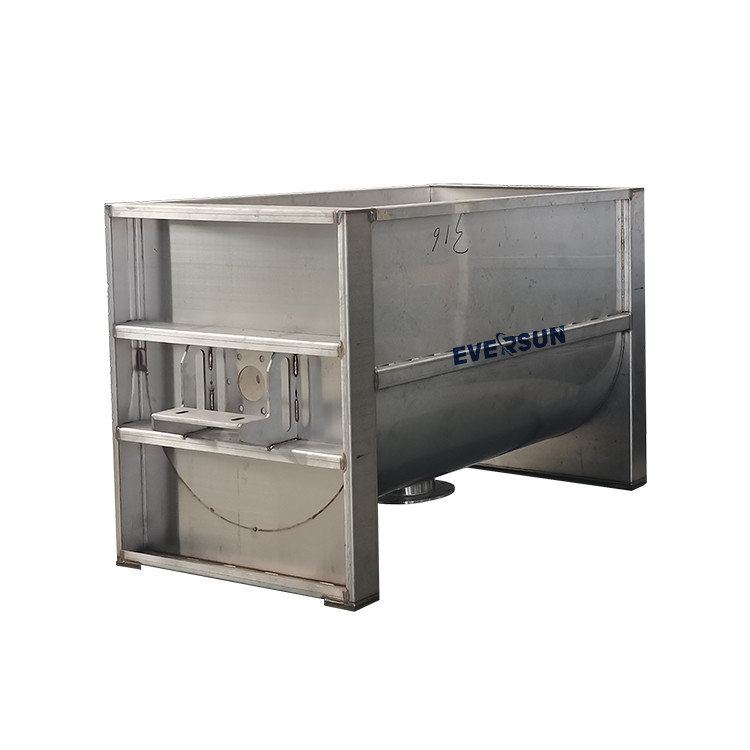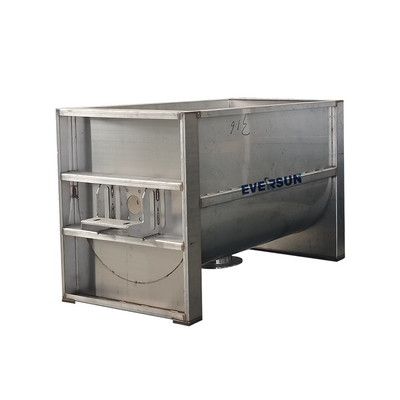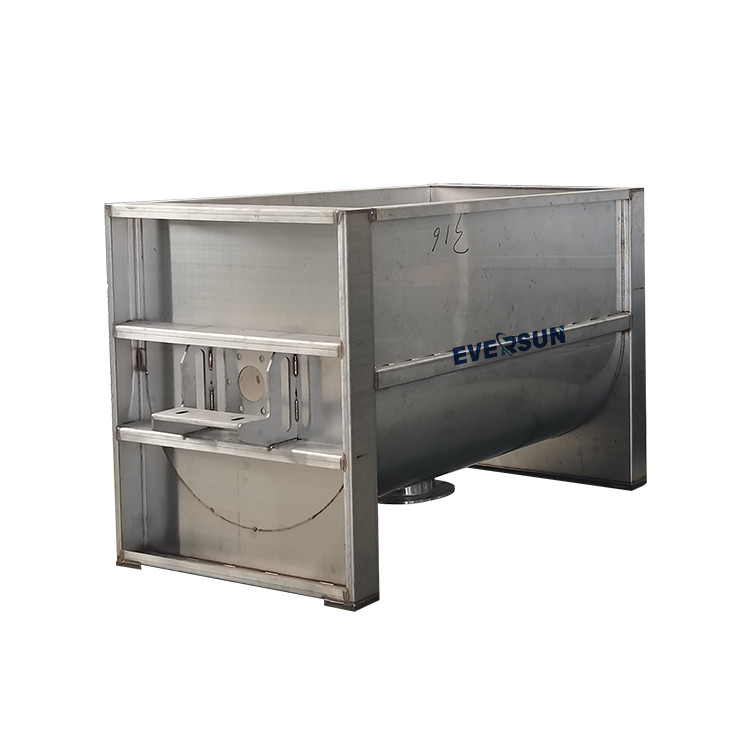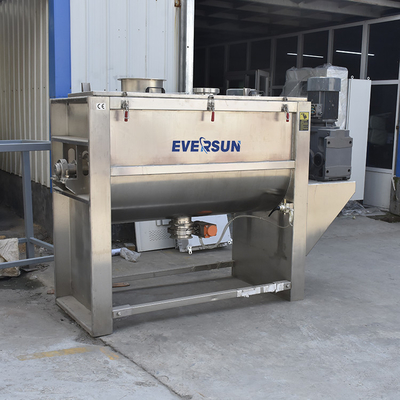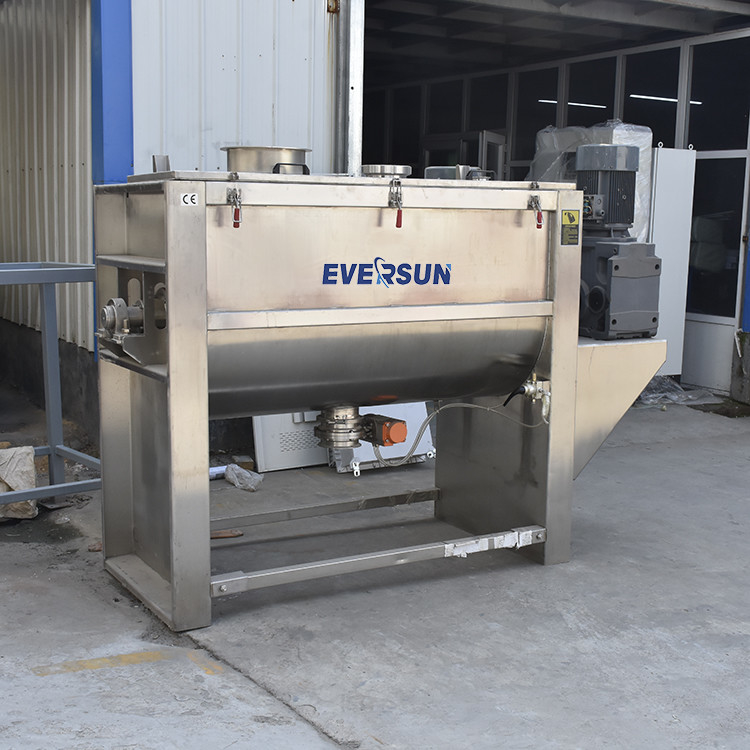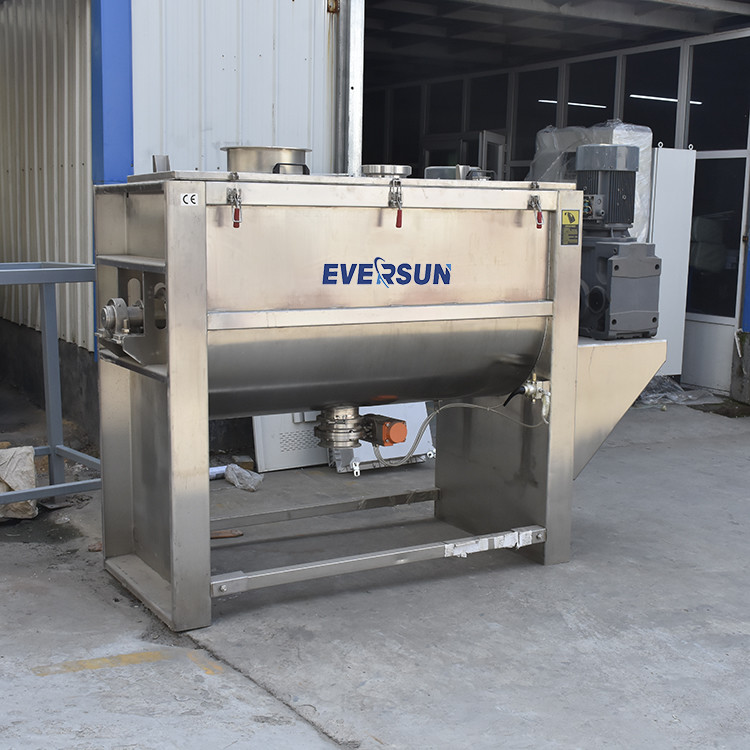Stainless Steel 316L Laboratory Small Ribbon Mixer Blender 10L-100L For Chemical
Product introduction
1) The laboratory small ribbon mixer is a special mixing equipment used for pilot research and development and small batch production. Compared with large industrial models, this type of machine is smaller in size and has lower processing capacity, but has the characteristics of simple structure, convenient operation and easy cleaning, which is very suitable for use in laboratories or small production workshops.
2) Laboratory small ribbon mixers are designed with single screw or twin screws, and the capacity is usually between 10 liters and 100 liters. The machine body can be made of transparent chemical glass to facilitate observation of the mixing process. Equipped with a precise speed regulating motor and heating system, it can meet the mixing needs of temperature-sensitive materials. In addition, different forms of feeding and discharging devices can be selected to meet different process requirements.
3) This type of machine is not only widely used in formula development and pilot production in the chemical, pharmaceutical and other industries, but also plays an important role in small batch mixing in the food, coating and other industries.
Technical specification
| Model |
Motor power (kw) |
Spindle
speed(r/min)
|
Primary mixing
(kg)m ³ |
L*W*H(mm) |
Weight (kg) |
| WLDH-0.5 |
5.5 |
41 |
400 |
2900*780*1240 |
1000 |
| WLDH-2 |
15 |
33 |
1600 |
3860*1200*1650 |
2200 |
| WLDH-4 |
22 |
28 |
3200 |
4600*1400*2000 |
4000 |
| WLDH-6 |
37 |
22 |
4800 |
5400*1560*2200 |
6280 |
| WLDH-8 |
45 |
22 |
6400 |
5100*1720*2420 |
8500 |
| WLDH-10 |
55 |
19 |
8000 |
5610*1750*2360 |
9300 |
| WLDH-15 |
90 |
17 |
12000 |
5820*2000*3160 |
11000 |
| WLDH-20 |
110 |
11 |
16000 |
6060*2630*3160 |
13500 |
| More model can be customized |

Features
1. Convenience of operation
Simple structure, easy to install, debug and maintain, friendly human-machine interaction, easy to operate, suitable for non-professionals
2. High flexibility
Adjustable speed and temperature parameters to meet various mixing process requirements, convenient for process experiments and formula adjustments
3. Clean and hygienic
Food-grade hygienic materials are used, easy to clean and disinfect, and meet the clean production requirements of food, medicine and other industries
4. Economical and practical
Equipment investment and operating costs are low, suitable for the budget of small and medium-sized enterprises and laboratories.


Application
1. Chemical industry
New formula development and pilot production, mixing of chemicals such as catalysts and additives, and formula adjustment of chemical products such as polymers and resins
2. Pharmaceutical industry
Development and pilot production of new drug formulas, mixing and granulation of APIs and excipients, and mixing of capsules, powders and other drugs
3. Food industry
New product formula development and trial production, mixing of additives, spices, etc., and mixing and processing of foods such as flour and candy
4. Paint industry
Development and adjustment of formulas of paints, inks, etc., and mixing of raw materials such as pigments and fillers
5. Laboratory research
Material performance testing and analysis, exploration and optimization of new mixing processes.

Service and ordering
Our service
1. Consulting service
Provide professional equipment selection suggestions based on the specific production needs of customers. Provide detailed introduction and description of the functions, parameters, applicable materials, etc. of the equipment.
2. Repair and maintenance
Establish a complete after-sales service network and provide fast-response repair support.
3. Technical support
Provide customers with technical guidance such as equipment optimization and process improvement.
4. Spare parts supply
Establish spare parts inventory to ensure that customers can get the required accessories at any time.

How to choose laboratory small ribbon mixer
The following key factors need to be considered when selecting a small ribbon mixer for the laboratory:
1. Material properties
Physical and chemical properties of the material such as particle size, fluidity, viscosity, whether the material is easy to agglomerate, adhere, etc., and the material's sensitivity to temperature
2. Capacity requirements
Typical batch size for laboratory or small batch production, whether continuous or intermittent operation is required
3. Process requirements
Whether special functions such as heating and cooling are required, whether special feeding and discharging methods are required
4. Material selection
Whether food-grade or medical-grade hygienic materials are required, whether special requirements such as anti-corrosion and anti-static are required

 Your message must be between 20-3,000 characters!
Your message must be between 20-3,000 characters! Please check your E-mail!
Please check your E-mail!  Your message must be between 20-3,000 characters!
Your message must be between 20-3,000 characters! Please check your E-mail!
Please check your E-mail! 

